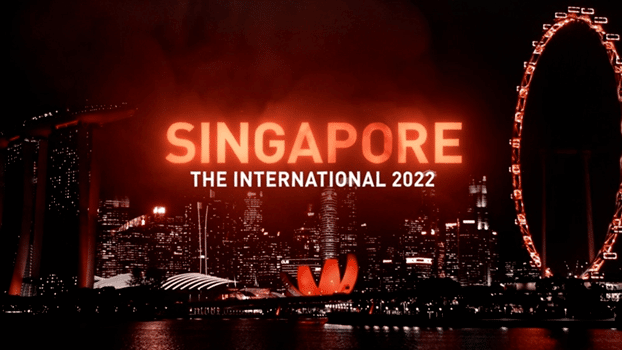热门话题
一年一度的dota2国际邀请赛将要召开啦。Dota2国际邀请赛也俗称TI,之前已经召开了10次比赛而这一次的就是TI 11.这次举办的地址选在了新加坡,这是电竞界的最高盛事首次来到东南亚。这将是迄今为止连续四个周末的Dota 赛事,共有来自世界各地的30 支队伍参加,这也将是迄今为止最大的Dota 赛事。

Dota 2是由Valve在2013年开发和发行的多人在线战斗竞技场(MOBA)视频游戏。该游戏是远古防御( Defense of the Ancients )的续集,DOTA是暴雪娱乐的《魔兽争霸III:混沌之治》社区创建的模组。Dota 2是在两由五名玩家组成的队伍之间进行的比赛,每支队伍在地图上占领和保卫自己的独立基地。十名玩家中的每一位都独立控制一个强大的角色,称为“英雄”,他们都拥有独特的能力和不同的游戏风格。在比赛期间玩家收集经验值 以及进行物品的购买,为了可以击杀对方团队的英雄。一个团队首先摧毁了另一个团队的“古代遗迹”,这是一个位于队伍己方基地,一旦基地遗迹被摧毁,那么摧毁方就会赢得比赛。因此,在这样的规则下,就让Dota2的比赛充满着许多的不确定性,无论击杀对方英雄多少次,一旦遗迹被摧毁,还是会输掉比赛。所以,DOta2的游戏魅力应运而生,那就是有无限的可能性,有时候一个小小的失误也可能葬送掉比赛。不过就是dota2的学习周期太长和上手难度高,导致游戏新鲜血液也越来越少。在今年8月分开始出售新加坡Ti11的比赛门票,但是在短短的15秒钟,门票就被黄牛抢购一空,作为想买门票的doter,不禁也感叹,黄牛真厉害。

不过,我们今天就来讲一讲从dota2国际邀请赛购票衍生出的黄牛经济学。黄牛一词的出现,是来源于20世纪的上海,在当时,票贩子进行抢票的的时候都是跑得快,挤的厉害,人们就称其“似黄牛之群骚动”。那么这个词真正开始推广的原因是之前的春运。春运期间,无数的人返现家,那么春运票就出现了供不应求的一个情况,而且因为政策的限制,票价不可能持续上涨。在这种情况下,黄牛就看准了这个机会,提前购入大量票,然后以高价把票卖出去,以此来牟利。纵观历史,黄牛实际上一直都存在于我们的社会生活当中。各个地方的叫法不同,有叫倒爷的,有叫黄牛的。然而他们都是同一类人。随着时代的改变,黄牛的倒卖范围也在不断的增加,从之前的演唱会票,到后来的Dota2 Ti 票,新上市的电子产品,甚至医院的挂号。大部分人把黄牛归结为管制的不够完善,而实际上,其中也存在的底层的经济学逻辑,让黄牛这一职业存活了下来,甚至到这些年,存活的也越来越好。

首先,最大的问题就是供不应求和价格的控制。对于这些情况,实际上就存在一个供不应求的关系。每年或者每个时间段有的供给是一个固定的数量(图中的S),但是在需求端是在逐渐上升的(D1-D2)。那么就造成供求曲线不存在任何的弹性。同时,在价格严格控制的同时,原本可以通过涨价使得需求降低的情况也不存在。这时候,黄牛的就应运而生,黄牛通过牟利,赚取差价,让票价上市(P1-P2),从而需求降低(Q1-Q2)。从某种意义上来说,黄牛“创造”了一个二级市场,然后通过自定义价格去使得供需达到一个罕见的平衡。当然,这个自定义的票价也不是随便去定义的,而是符合市场需求环境去定价。只要一天供给达不到平衡,价格继续被控制住,黄牛就会继续牟利。

以这次Ti门票为例,实际上,对于决赛的门票一定需求大于供给的,那么黄牛看准这个机会,先抢到这个票,把价格提上来,最后卖出去牟利,而黄牛也知道,决赛门票只要不是贵的离谱,近期是不会出现滞销的,因此,很多人成为的抢不到票的倒霉蛋。进而大概率只能去购买高价的黄牛票。其次,就是定价的公平性。实际上很多东西的定价对于不同人群是不同的。举个例子,抢购某个新产品,会员价格是5000,非会员价格是7000.那么这样的情况就会自然而然的产生差价,要么我就成为会员,要么就是找有会员的人买。当然,有会员的人出售的时候,大部分都不会以5000的原价出售。因为我费时费力的抢购,但是又不会以7000的非会员价出售,这时候可能6000就是一个合理价格,那么就可以达成双方都开心的局面。没需求的会员赚了1000,有需求的非会员节省了1000元。当然,这并不能改变黄牛在我们心中的地位。最主要的原因就是,黄牛打破了一个最基本的原则。公平。因为无论是我们抢票还是买东西,只要我们有足够的资金,都有权去购买想要的产品,这就是有着同样机会的公平性。就像但是黄牛通过自身的手段,使我们失去了这种机会和权力的公平性。其次就是使得供求双方的权利受损的可能性非常大。因为其使得供需双方不能直接交易,那么很容易出现就是分配不公平的现象。最简单的例子就是,黄牛价格太狠,导致演唱会门票滞销,想看演唱会的人看不到,辛辛苦苦准备的歌手等主办方努力付诸东流。然后就是,黄牛中不可避免的存在有欺诈的存在,导致供需双方利益进一步受损。免责声明:GO Markets分析师或外部发言人提供的信息基于其独立分析或个人经验。所表达的观点或交易风格仅代表其个人;并不代表GO Markets的观点或立场。联系方式:墨尔本 03 8658 0603悉尼 02 9188 0418中国地区(中文) 400 120 8537中国地区(英文) +248 4 671 903作者:Neo Yuan | GO Markets 助理分析师



.jpg)
.jpg)



.jpg)


